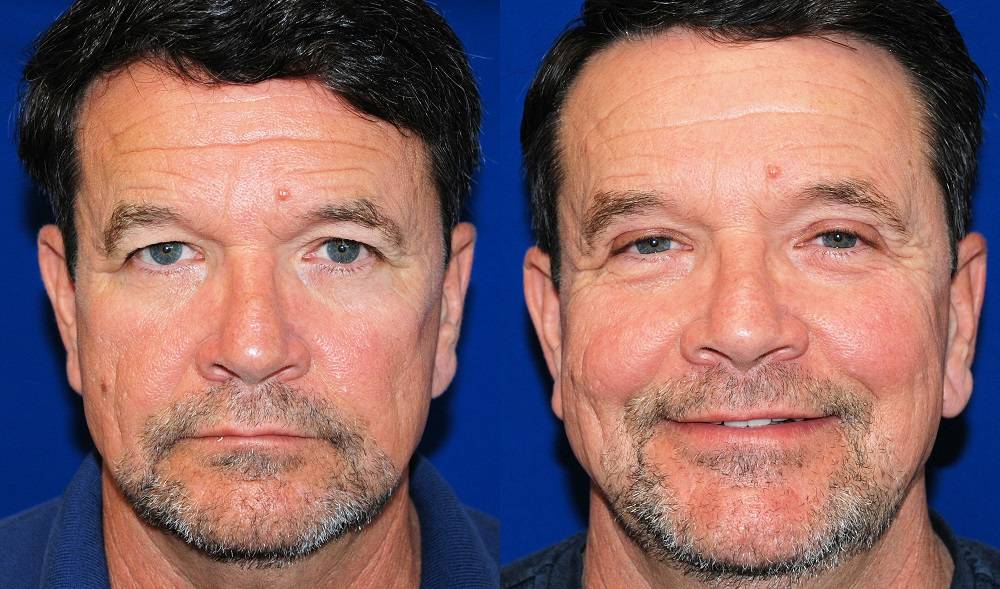One of the earliest procedures to elevate the brow was the bi-coronal lift, which uses an incision that goes across the top of the head, just behind the hairline. This is, perhaps, the most powerful type of lift because it gives the surgeon optimal exposure and opportunities to correct the entire forehead. The corrugator muscles that cause the “11 lines” between our eyes can be removed as well. It is, however, the most invasive, and is used infrequently today.
A less invasive yet effective alternative is to use two, smaller incisions that straddle the temporal crest, behind the hairline. This method is capable of making favorable improvements to the lateral brow by tightening specific fascial layers of the forehead soft tissue.
Another technique that works well is performed at the same time as a blepharoplasty. The incision, in the upper eyelid crease, permits the surgeon to reposition the mid and lateral brow, re-anchoring it to the periosteum; excess upper eyelid skin is removed as well. Patients enjoy the improvements of blepharoplasty plus the added benefit of improved brow position; eventually, the incision becomes barely visible.
A host of factors must be considered when choosing the best technique. Age, severity, location of hairline, and the patient’s expectations must be thoroughly considered.








